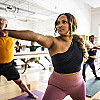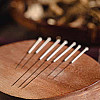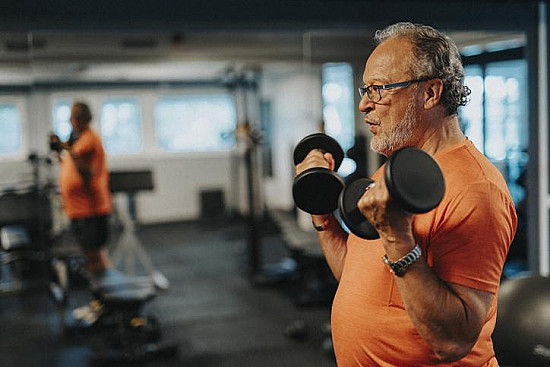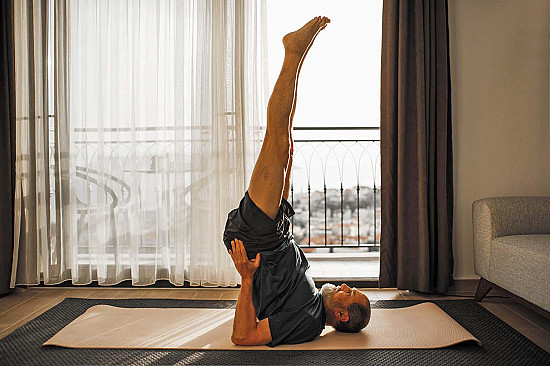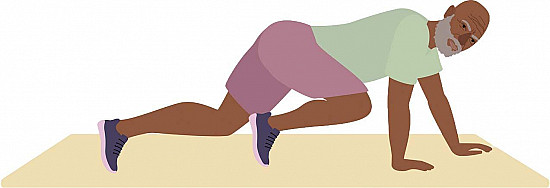3 kettlebell moves
These versatile tools can give your home workouts a lift.
- Reviewed by Howard E. LeWine, MD, Chief Medical Editor, Harvard Health Publishing; Editorial Advisory Board Member, Harvard Health Publishing
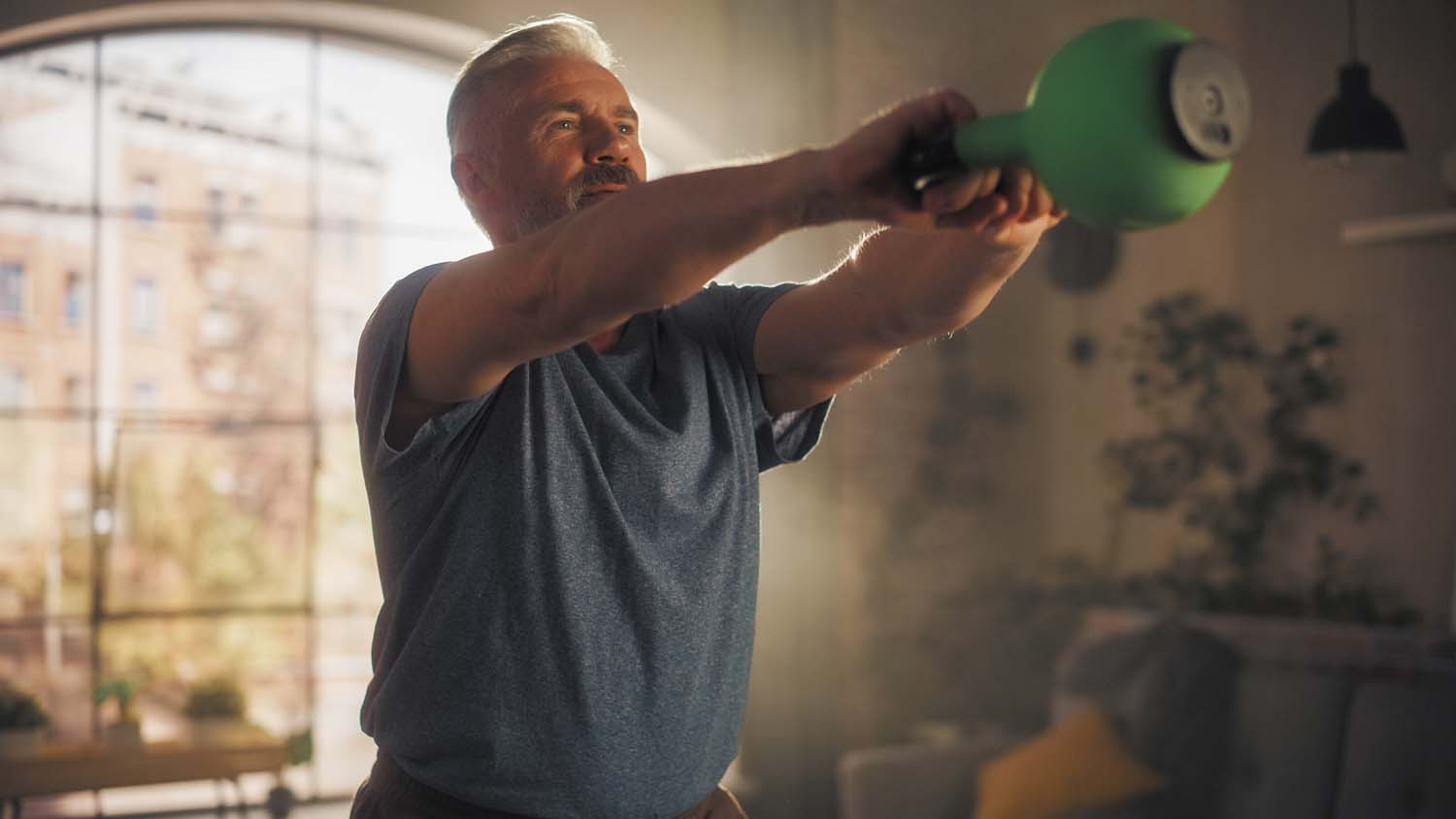
There are many ways to exercise at home using only your body weight, but investing in kettlebells can expand your workout repertoire.
"Kettlebells don't take up much room, as you can easily store them under the bed, and you can use them to do virtually any type of movement for an all-around workout that hits the major muscles," says Nadia Havens, a strength and conditioning specialist with Harvard-affiliated Massachusetts General Hospital.
Kettlebells look like balls or bells with handles on top. They range in weight from five to 30 pounds and higher. Unlike a dumbbell, the kettlebell's weight is offset from the handle. This can make for a more challenging workout, as you need a combination of muscle strength, balance, core stability, flexibility, and coordination to control the kettlebell weight. "Also, for some people, kettlebells are more comfortable to hold and move in your hand, so people of any age can use them with greater confidence," says Havens.
Begin with a moderately challenging kettlebell weight — one that lets you do five to 10 good repetitions of an exercise. "If you are not fatigued by the end, it's too light," says Havens. As you progress, invest in a few heavier kettlebells, or alter the tempo so that the exercise movement is slower.
Here are three kettlebell moves to get you going. Depending on your overall health and medical history, it may be a good idea to check with your doctor before trying kettlebell exercises, especially if you have osteoporosis or problems with balance.
Swings
Swings target the buttocks, hips, backs of the thighs, and lower back. They also can improve your posture, since you engage your back and core muscles during the movement. The swing is a simple three-step exercise:
1. Stand with your feet shoulder-width apart and knees slightly bent. Hold a kettlebell with both hands using an overhand grip, arms extended down in front of you, so the kettlebell hangs between your legs.
2. Bend your knees further and push your hips back until the kettlebell is between and behind your legs. Then straighten up as you swing the kettlebell up to the level of your chest or eyes.
3. Let the weight swing back down between your legs as you bend at your hips and slightly bend your knees again. This returns you to the starting position. Swing up again and continue to repeat this back-and-forth swinging motion.
Begin with a light weight to get a feel for the swinging movement. Also, use a kettlebell with a handle wide enough to grip with two hands, and consider wearing weight-lifting gloves, as some kettlebell handles can be slippery.
Do up to 10 swings, or as many as possible while keeping good form. Rest and repeat the sequence up to two more times. Another approach is to do intervals, where you swing for 30 seconds followed by a 30-second rest period and repeat the cycle three to five times.
Havens recommends having a trainer show you how to execute a proper swing before trying it on your own. "Many people squat during swings to help propel the weight up, but you want to thrust your hips forward during the upward swing," she says. "This is a more explosive movement than rising from a regular squat, and it works the buttock and thigh muscles more."
Halos
This movement works the abdomen, back, and shoulders.
1. Stand with your feet shoulder-width apart. With both hands, hold a kettlebell over and behind your head.
2. Keeping your lower body stationary and your abdominal muscles tight, circle the kettlebell clockwise over your head four or five times. Then circle counterclockwise four or five times. This completes one set. Rest and repeat twice.
To make it easier, make smaller circles or use a lighter kettlebell. For a challenge, do up to 10 circles each way, make larger circles, or use a heavier kettlebell.
Farmer's walk
This exercise works your arms, shoulders, and upper back.
1. Hold a kettlebell in each hand, like you're carrying buckets, with your head up and shoulders back.
2. Take 20 steps and then turn around and walk back to the starting point to complete one rep. Repeat three to five times.
Another option is to hold a kettlebell only in one hand and walk the same distance. (Make sure you don't lean to the side as you walk.) Repeat while holding the kettlebell in the other hand. These movements strengthen your core and buttock muscles and help you carry everyday objects with better control.
A variation to the farmer's walk is the goblet carry. Grab a kettlebell by the handle with two hands and hold it in front of your face as if you're about to take a sip from the handle. Then walk 20 steps out and then turn around and walk back. Repeat three to five times.
Image: © gorodenkoff/Getty Images
About the Author

Matthew Solan, Executive Editor, Harvard Men's Health Watch
About the Reviewer

Howard E. LeWine, MD, Chief Medical Editor, Harvard Health Publishing; Editorial Advisory Board Member, Harvard Health Publishing
Disclaimer:
As a service to our readers, Harvard Health Publishing provides access to our library of archived content. Please note the date of last review or update on all articles.
No content on this site, regardless of date, should ever be used as a substitute for direct medical advice from your doctor or other qualified clinician.





